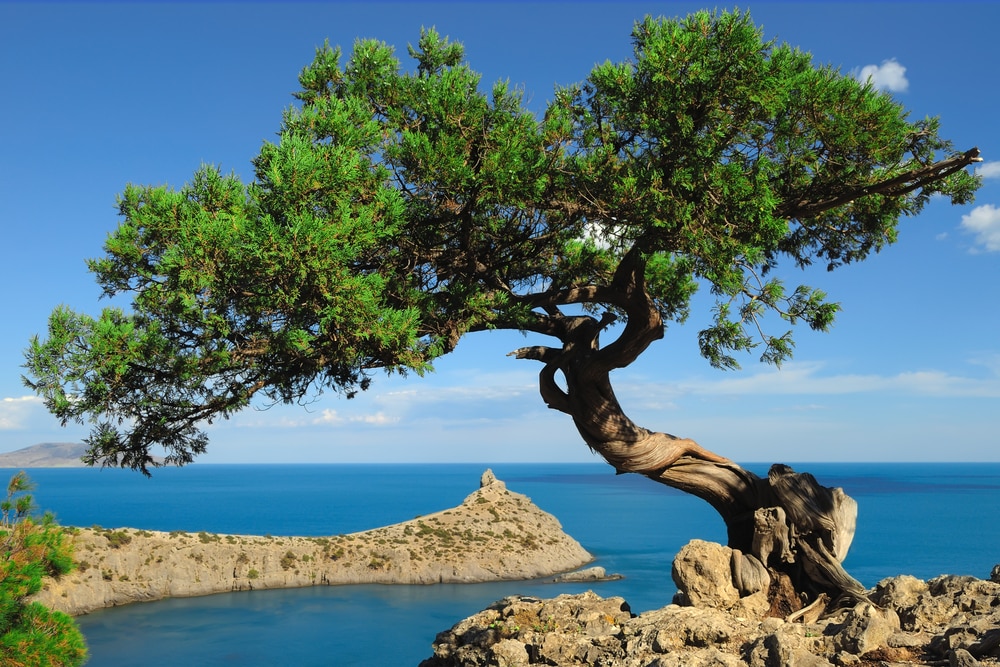
Junipers are evergreen coniferous trees that can be grown as shrubs as well. The plant has about 50 to 67 species that are distributed throughout the world. When thinking about planting a tree, people should first decide which variety to select. This can be quite essential as each type comes with its unique characteristics. Moreover, the steps required to keep them healthy can also sometimes vary. Keeping this in mind, the region that you live in and the temperatures it has throughout the year can affect the growth of your juniper trees.
Considering what your requirements are is also a great way of deciding what type of plant is in your garden. With that being said, if you are thinking about growing a specie of juniper inside your home, then understanding its different types can be important. Hence, we will be using this article to provide you with a list of varieties for juniper trees along with all the information required about them.
Juniper Tree Varieties
- Blue Star Juniper
Juniperus Squamata or also known as “Blue Star” juniper is a dwarf evergreen that is grown mostly as a shrub. The variety of juniper has a globe shape originally that is quite dense. The plant contains sparkling bluish foliage that changes its color to a purplish shade during winters.
The shrub is slow growing but looks terrific when planted inside gardens. Keep in mind that the slow growth makes it a great option to be planted as a groundcover. This is because people don’t have to slice through the additional stems growing out daily.
Simply pinching the shrub occasionally can help in keeping it in place and maintaining its growth. The shrubs also require next to no maintenance and can stay healthy as long as they are kept under sunlight. About 6 to 8 hours of light every day is more than enough to keep your blue start juniper shrubs healthy and blooming.
- Floreant Juniper
Juniper floreant is another evergreen shrub that is considered to be a dwarf. The plant only grows about 12 inches tall and about 16 inches wide even after it has completely matured. This can take about 5 to even 10 years which is why most users simply purchase fully grown shrubs.
Just like the variety mentioned above, the slow growth makes it a great option for people looking to keep small shrubs in their gardens. The plant grows blue foliage whereas it is filled with speckles of a white-cream color.
The maintenance of the shrubs is slightly different as it has to be kept under partial shade instead of complete sunlight. People should also ensure that the soil around their floreant juniper remains moist as the shrub takes tons of nutrients from it.
- Limeglow Juniper
Limeglow junipers are mostly known for the vase shape they grow in. The scale-shaped foliage on them looks great when you consider that these are also a type of dwarf evergreen shrub. Limeglow junipers keep their yellowish shade throughout their growing season which ranges from spring to summer.
Although, during winters, the color quickly changes to shades of orange and purple that also look beautiful. The amazing thing about the plant is that it can last people several years as long as they take proper care of it. Hence, you can watch your Limeglow junipers changing colors throughout the year.
When keeping the plants healthy, people have to keep them under the sun for as long as they can. The plant is tolerant to drought, but it can still be better if the soil around them is kept moist. This can be easily maintained by having a proper drainage system installed in your garden.
- Gold Cone Juniper
Gold cone juniper or also known as common juniper is another type of evergreen shrub. Though, the main difference between this variant and others is that gold cone junipers grow upright. If properly pruned, the plant can look like a small tree which gives your garden a unique look.
The plant can grow about 5 feet tall while its width only stays between 1.5 to 2 feet. Medium moisture and well-drained soil are enough to keep the shrubs healthy. But it can be better that people also keep their soil full of nutrients by adding fertilizers occasionally.
